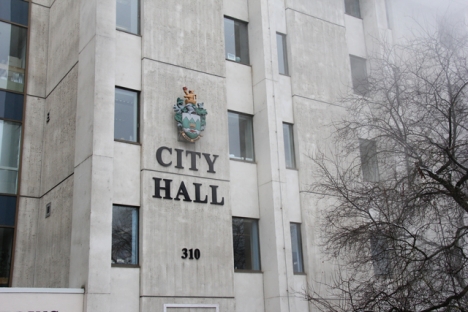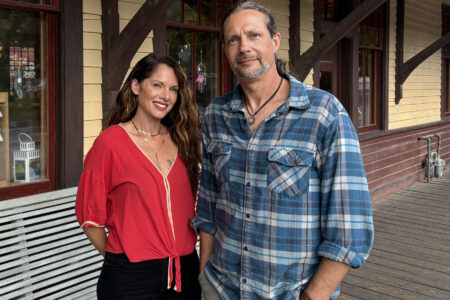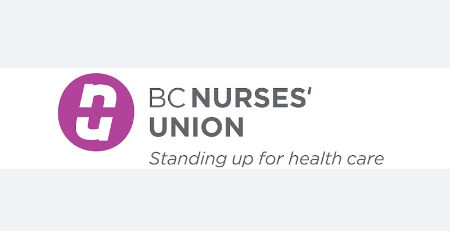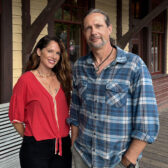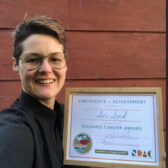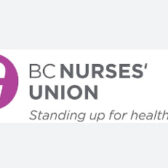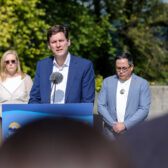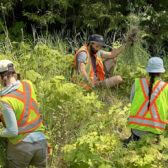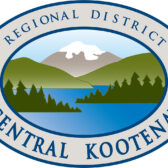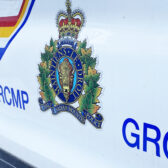City sits with surplus at halfway point of the fiscal year
The city is sitting in a $11.9-million surplus position just past its second quarter post, but it has less to do with unexpected fortune than it does proper planning.
The city always budgets for a surplus, but at the half way point of the year the finances are operating as expected, said city chief financial officer Colin McClure.
The difference this year is the city has not had any major wind or rainstorms which, in the past few years, have caused many problems and some unbudgeted big bills.
“So, hopefully this will continue and we will end up with a normal budgeted year,” he said.
Last year the city held a $9.9-million surplus after the second quarter.
It is unlikely that the city will end up the year totally on budget, McClure pointed out, but all of the plus and minus items of the year will be reconciled and the amounts will be allocated to the appropriate reserves.
About $1.1 million funds capital purchases and is allocated to a number of different reserve funds, McClure noted. The city has budgeted almost $13 million in capital spending for 2016 and that will be funded from operations as well as capital reserves.
At the same time certain surpluses — like the sewer fund where the operating expenses and capital projects budgeted for will result in a surplus — must be allocated to the its specific reserve fund.
Taxes, water and sewer revenues are all billed out and mostly collected by June 30 of the year, McClure said, however, expenses have their own cycle but are close to being around 50 per cent spent at the same period.
“So that will increase the surplus half way through the year,” he said.
The current surplus (revenue over expenses) goes to pay down debt principal.
The city is also on target to end the year in line with the budgeted operating revenues of $43.3 million. However, there are still some provincial grant-in-lieu taxes outstanding ($10,533) that are normally received later in the fall.
“Other revenue” was higher last year — around $370,000 — due to the significant sewer and water connection fees and the building permit fee related to the Nelson Commons project.
There has also been less dwelling unit development as compared to the same period last year. In addition, some of the major development projects (Selkirk College, Silver King Campus, Ankron medical clinic) are still in the planning stage and as of yet have not required the payment of a building permit.
The bond investments of the city have not performed as well as compared to the same period last year, McClure said, but that is expected with the downward pressure on interest rates coupled with the economic uncertainty that has been challenging the markets so far this year.
Transit revenues are higher than at the same time last year— $116,357 compared to $105,979 — but are in line with what was expected and budgeted.
Through the collaborative work of the West Kootenay Transit committee, the system integration, additional routes and an increase in frequency of trips has resulted in a 10 per cent ridership increase from 2014/15.
Nelson Hydro sales are in line with expectations at $8.4 million, up from last year by over $300,000.
“There was a much stronger freshet this year as compared to the prior year which had a positive effect on lowering the need and cost of purchasing power from FortisBC this spring and early summer,” said McClure.
Overall, the city is managing the expense portion of the operating budget within the expected parameters, McClure said, with $15.2 million — or 46 per cent — of the total expenses’ budget already spent.
General government is higher than last year at this time (by around $52,000) partially as a result of the city having a full six months of wages from the manager of information technology.
As well, another factor is the consultant fees for the budgeted Railtown and downtown planning projects.
The change in structure at the Nelson Police Department — with another sergeant instead of a deputy chief — has assisted in the protective services expenses being lower this year as compared to 2015. Other factors in these expenses being lower this year are a decrease in police board travel and less repairs on fire trucks.
When compared to the prior year transportation services expenses are higher (over $275,000) this year. McClure said this was a result of having city crews working on upgrades to sidewalks, retaining walls and pavement patching whereas these crews were allocated to other utility capital projects during the same period last year.
Glad tidings in Glade
A project to upgrade ramps at the Glade ferry terminal in advance of the arrival of the new cable ferry — which connects the community to Highway 3A — is now moving ahead.
“To accommodate the new cable ferry being built to serve the community of Glade, the ramps on either side of the river will be upgraded,” said Transportation and Infrastructure Minister Todd Stone. “The new ramps will also improve ferry operations during times when water levels on the Kootenay River are high or low.”
The work involves replacement of existing concrete ramp structures on both sides of the Kootenay River with new steel and reinforced concrete ramps. The project has gone to tender, with work expected to begin this fall and be completed by the end of 2016.
The new cable ferry to serve the community of Glade is under construction at Waterbridge Steel in Nakusp. It will be larger than the existing ferry and be able to carry more vehicles, with capacity increased to handle commercial vehicles at full highway loads. The new ferry will be in service later in 2017.


